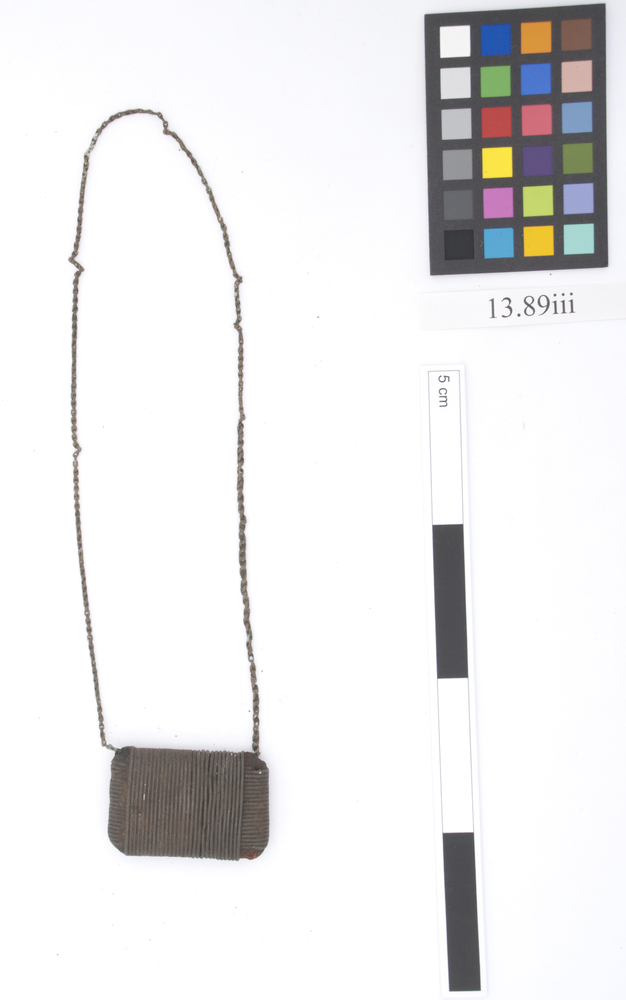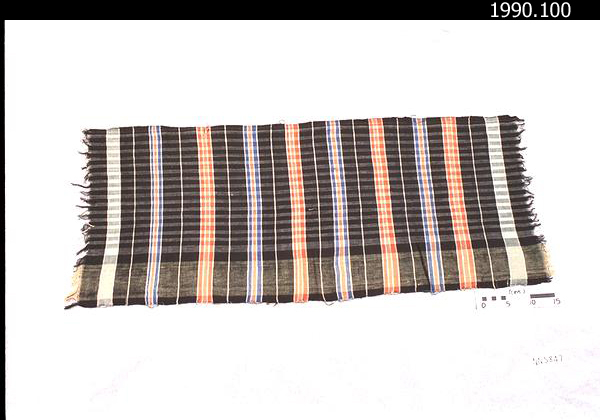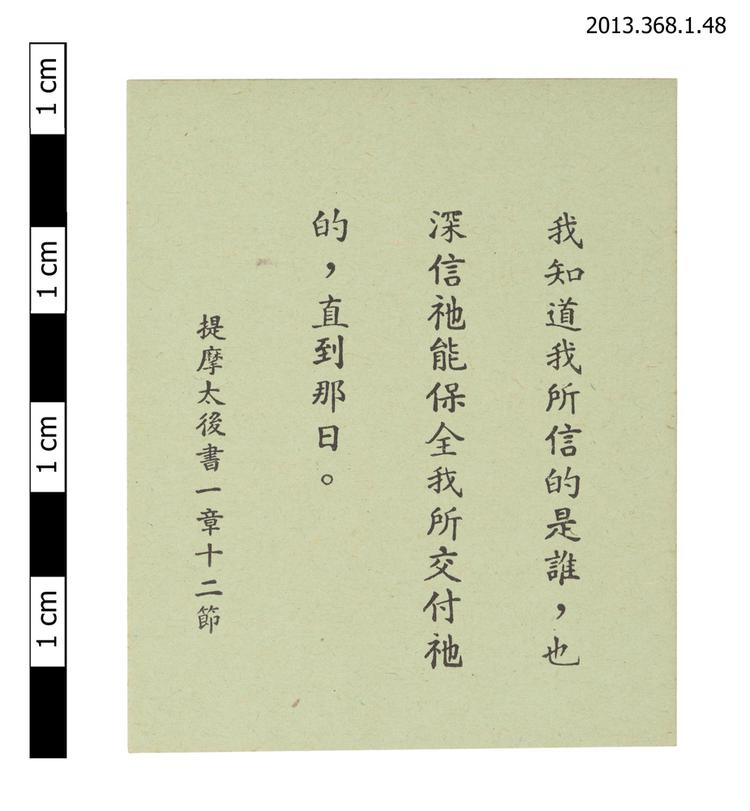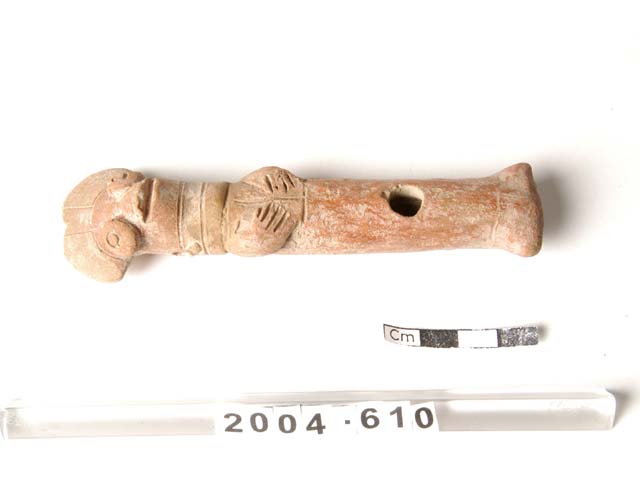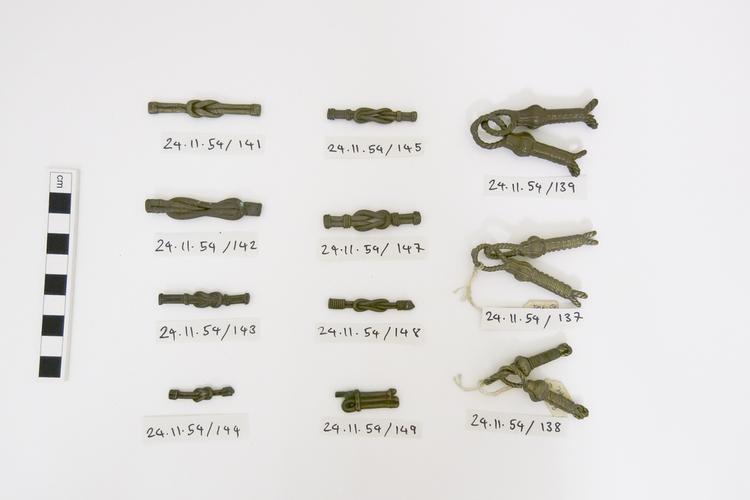
Gold weight in the form of an amulet known as a wisdom knot, depicting two metal bars seemingly tied together. The efficacy of this amulet comes from the idea of binding or capturing something powerful.
Brass weights, such as this example, were used to measure gold dust across Islamic West Africa. Gold dust was a form of currency, used predominantly by Akan speaking people from the 14th century to 1900, when the practice was banned by the British Government in Ghana in an attempt to standardize trade using a monetary system. Once they were banned they flooded the European art market, purchased and bought back by European traders. Such weights often tell a story, representing items of prestige, or characters from popular stories or proverbs. This example represents an amulet known as a 'wisdom knot', formed by two metal roads seemingly tied in a knot. Such weights would have been made by goldsmiths using the ‘lost wax’ technique, where a shape is carved or moulded out of wax before being dipped in several layers of clay slip. Once the slip has dried, molten brass is poured into the mould, replacing the wax by melting it. These weights would often initially have been commissioned by an individual, and then passed down the matrilineal line through inheritance. As trade in gold dust was predominantly an activity reserved for men, an individual would inherit the weights passed down through his mother’s brother. It was said that a person’s soul inhabited the things they used, and thus a collection of inherited weights might be understood to be an assemblage of highly spiritual and personal objects, representing one’s ancestors.



